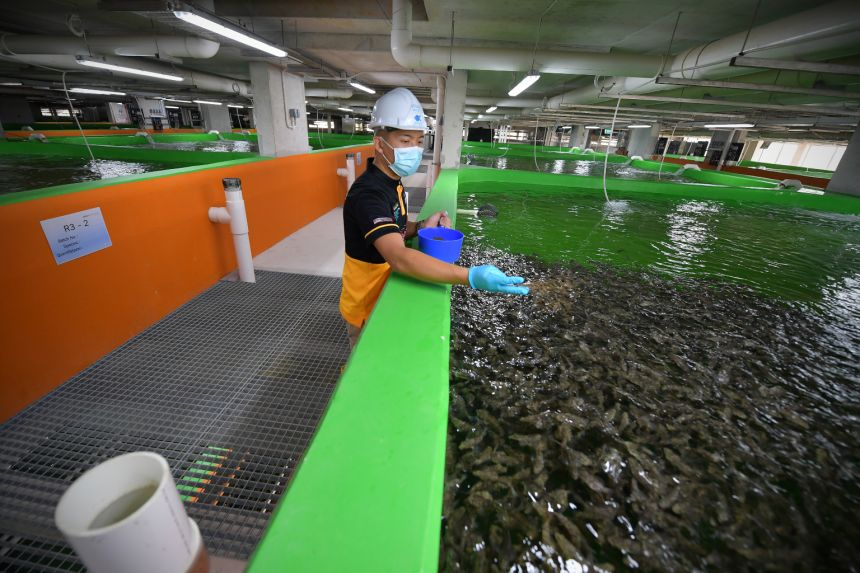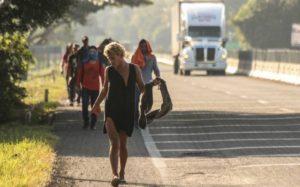High-rise living is not just for humans in Singapore.
An eight-storey fish farm – the tallest in Singapore and the region – started operations in the first quarter of this year.
The opening of the new facility by homegrown fish farming company Apollo Aquaculture Group comes amid a governmental push to get farmers here to use technology to improve yields.
Singapore wants to meet 30 per cent of its nutritional needs with local produce by 2030 – up from less than 10 per cent today. The goal is to boost food security by improving local production, so it is more resilient to global food supply shocks.
Mr Lucky Phua, senior director for international and corporate development at Apollo Aquaculture Group, said the facility’s first phase of operations will involve farming mainly hybrid grouper and coral trout on the first three storeys of the building. The expected output is up to 1,000 tonnes of fish a year.
This is more than six times the yearly output capacity of 150 tonnes of fish from Apollo’s three-tiered pilot farm in Lim Chu Kang, said Mr Phua.
When all tanks across eight storeys are operational in 2023, the total output capacity would be 2,700 tonnes a year, he added. For context, some 4,707 tonnes of fish were produced in Singapore in 2019.
Apollo’s $65 million fish farming facility looks nothing like the “kelongs” (offshore fish farms) people here usually associate with the rearing of fish.
Painted a bright blue, it appears to be the tallest building in the rural Neo Tiew Crescent area, and would not look out of place in an industrial park elsewhere in the country.
Inside, screens on a wall in an air-conditioned control room showed camera footage of the tanks – some of which now house hybrid grouper fingerlings – while others displayed water parameters such as pH value (a measure of how acidic or basic the water is), temperature and salinity.
Farming fish on land may be more expensive, but it allows for higher productivity because of vertical expansion and also affords farmers greater control over water quality, said Mr Phua. “In the sea, water quality depends on what the currents bring. Temperature and salinity also fluctuate,” he said.
Apollo has developed its own recirculating aquaculture system and equipment so the water can be treated and reused.
Farming in this controlled environment also means the farm can grow fish without the need to use hormones, antibiotics or vaccinations, to prevent diseases, said Mr Phua.
Apollo’s seafood currently costs slightly more than imported varieties. For instance, its hybrid groupers usually sell for between $18 and $28 per kilogram or fish, while the coral trout is sold for between $70 and $90 per kg.
But Mr Phua said costs will come down as production goes up.
He expects the new transformation fund to cover a broader scope than a push for productivity, and hopes there will be greater efforts to increase Singaporeans’ appetite for local produce.
Dr Ritu Bhalla, senior manager at Republic Polytechnic’s Agriculture Research and Innovation Centre, said fish is most economically farmed in natural water bodies, but these options are limited here.
“Farming fish in urban settings like Apollo (is doing) may very well be the way forward for us,” she said. “Being entirely self-contained, it allows for complete control and monitoring of all growth parameters. This can bring benefits like optimised feeding regime to reduce feed, zero pollution to our local water systems, and potentially better produce quality.”
Land-based recirculating aquaculture systems like Apollo’s are more energy intensive, but are highly flexible to meet potential food supply emergencies, provided there are ready sources of fast growing fish fingerlings, she said. “In the interest of diversifying our food sources and enhancing Singapore’s food security, the slight cost premium can possibly be justified in the longer term.”




